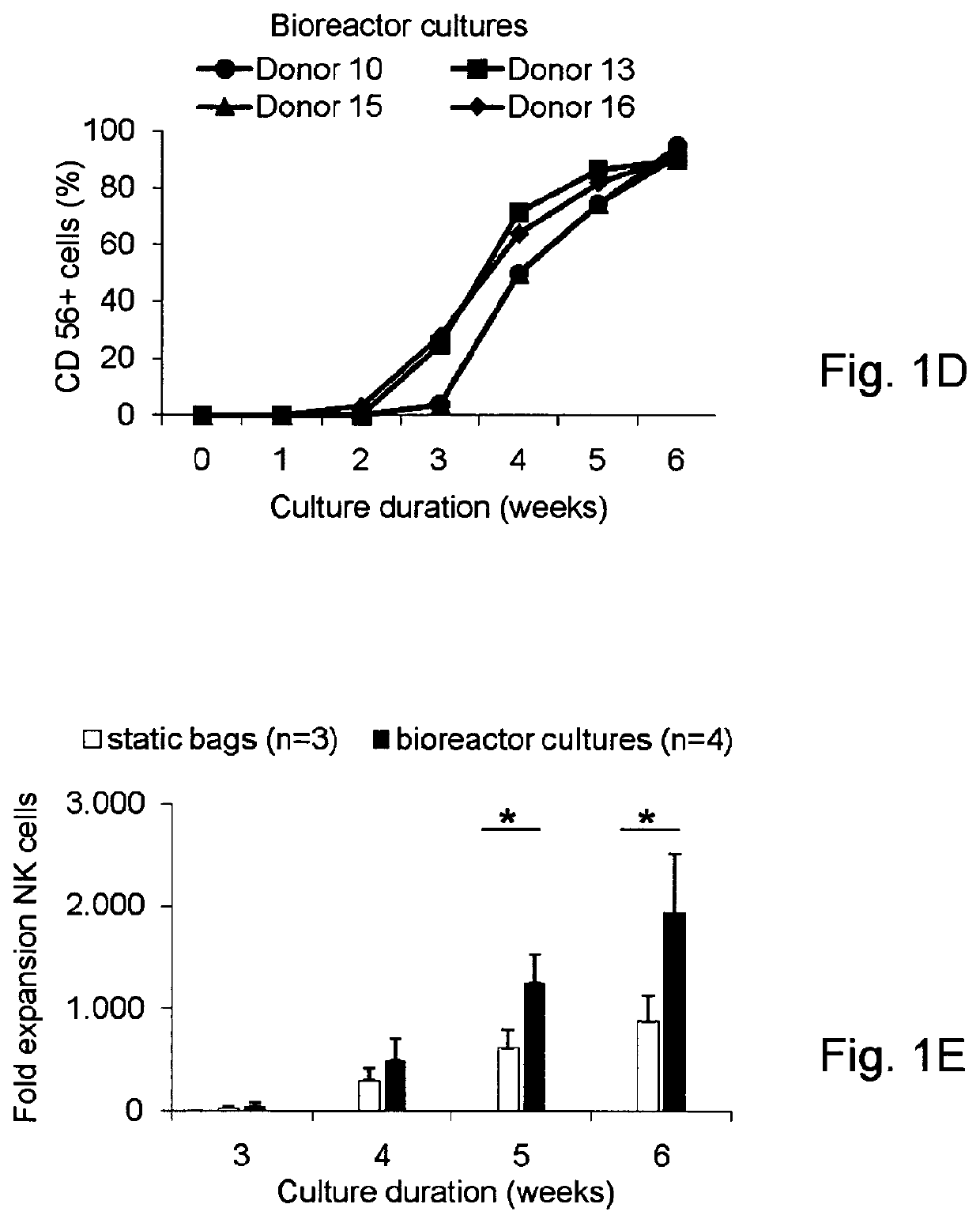Generation of NK cells and NK-cell progenitors
a technology of nk cells and progenitors, applied in the field of stem cell technology, can solve the problems of regulatory problems producing nk cell products, affecting clinical trials of nk-cell dose dependent anti-tumor responses, and a small number of nk cells can be isolated from regular leukapheresis products, so as to reduce the cost of the procedure, improve the yield, and increase the number of cells.
- Summary
- Abstract
- Description
- Claims
- Application Information
AI Technical Summary
Benefits of technology
Problems solved by technology
Method used
Image
Examples
example 1
[0243]Efficient Enrichment of CD34+ Cells from Cryopreserved Umbilical Cord Blood
[0244]The overall aim of this study was to develop a closed ex vivo culture system for the expansion and differentiation of CD34+ UCB cells into NK cells followed by the subsequent log-scale generation of CD56+CD3− NK cells. As the initiation of our culture process requires hematopoietic progenitor cells, we optimized the CD34+ enrichment procedure from cryopreserved UCB units using the CLINIMACS® system. Prior to banking in liquid nitrogen the collected UCB units used for this study (n=16) have been reduced for red blood cells and volume using ELOHAES® separation. The mean volume of 111±34 ml (range 72-175 ml) and mean WBC count of 1,503±455×106 cells (range 772-2,380×106) was reduced to 25 ml with a WBC count of 1,085±357×106 cells (range 600-1,721×106) containing 3.78±1.95×106 CD34+ cells (range 1.73-8.72×106) (Table 1). Cryopreserved UCB units were thawed and prepared for CD34+ selection using CLINI...
example 2
[0254]To identify human NK cell developmental stages within the different tissues and to analyze the distribution of different NK cell subsets and their NK cell receptor repertoire, we designed three 10-color flow cytometry (FCM) panels (Table 5). As BM is considered the origin of NK cell development [44-47], we first analyzed BM for the presence of NK cell developmental stages.
[0255]Identification of Seven NK Cell Developmental Stages in BM
[0256]Distinct NK cell developmental stages can be characterized through expression analysis of CD34, CD117, CD94 and CD56 antigens [50]. Based on that, we gated our samples on the CD45+CD3− population within CD45+ / SS gated cells to exclude T cells and endothelial cells from analysis. Subsequently, cell subsets were first divided based on the expression of CD34 and CD117. From there, in a second step, each subset was analyzed for CD56 and CD94 expression. Using this gating strategy, we were able to identify seven distinctive developmental stages ...
PUM
 Login to View More
Login to View More Abstract
Description
Claims
Application Information
 Login to View More
Login to View More - R&D
- Intellectual Property
- Life Sciences
- Materials
- Tech Scout
- Unparalleled Data Quality
- Higher Quality Content
- 60% Fewer Hallucinations
Browse by: Latest US Patents, China's latest patents, Technical Efficacy Thesaurus, Application Domain, Technology Topic, Popular Technical Reports.
© 2025 PatSnap. All rights reserved.Legal|Privacy policy|Modern Slavery Act Transparency Statement|Sitemap|About US| Contact US: help@patsnap.com



